One of the primary goals of the Estuary Program is to track the health of Morro Bay and the lands that surround it. The monitoring efforts of our program and our partners are a crucial component of this. At the heart of this work is our monitoring staff. Our program typically has one or two Monitoring Technicians to carry out a variety of tasks for our program. This includes fieldwork, equipment calibration and maintenance, and coordination of student and volunteer support. Each technician brings their unique perspectives, backgrounds, and work experiences to our cohesive team. As we bid farewell to Monitoring Technician Ben, we warmly welcome Kendra, a Morro Bay local.
Outgoing Technician: Farewell, Ben!
Ben has been working with the Estuary Program for just over a year. During his time with the Program, he has supported a diverse array of projects in the estuary and watershed. His primary tasks as a Monitoring Technician have been collecting water quality data and ensuring high data quality.
A Week as a Monitoring Technician
A typical week for Ben would start with calibrating water quality monitoring equipment. Frequent calibration ensures that our data is representative of true conditions. After calibrating, Ben would head out to sites in the watershed to collect a variety of data points. This may include water quality data, measure stream flow, and collect water samples for nutrient and turbidity analysis. At sites with continuous monitoring equipment, like continuous temperature or depth sensors, Ben would download data and check that the equipment was in good working condition. Each month, Ben would also deploy water quality monitoring sondes throughout the watershed. These sensors collect temperature, dissolved oxygen, conductivity, pH, and chlorophyll data for a week-long period. His office time was spent managing the data and reviewing data trends.
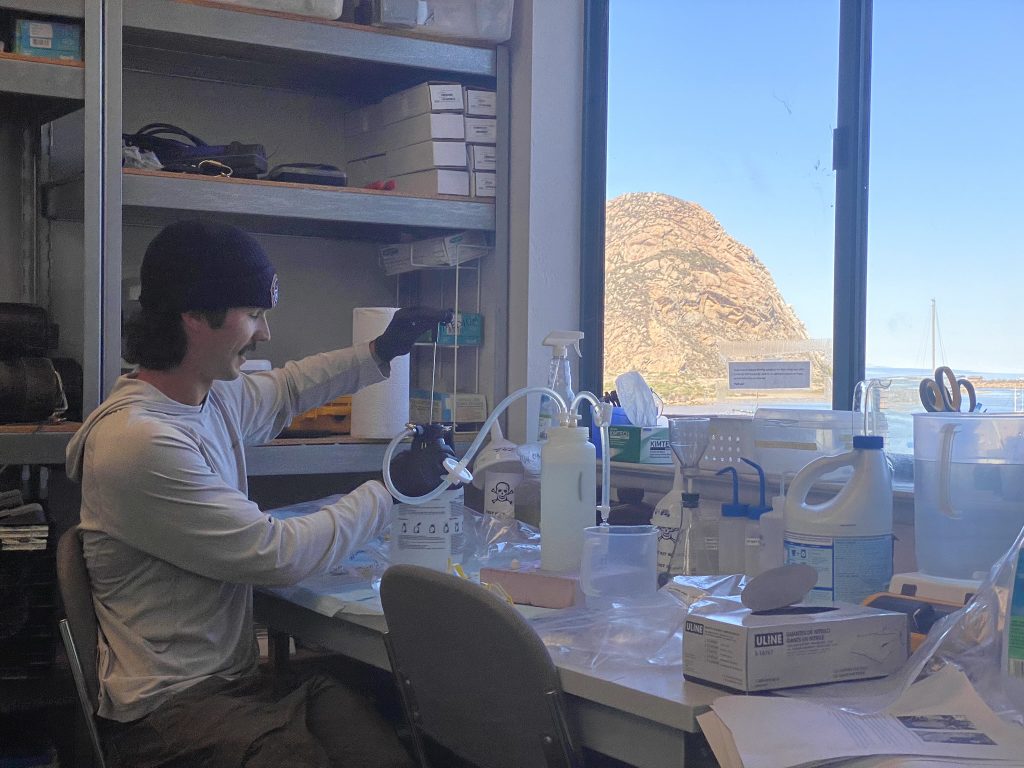
Ben has been a key component of our seasonal field efforts including spring bioassessment monitoring, intertidal eelgrass monitoring, and pikeminnow management. His interest in freshwater hydrology made him a great candidate for leading a stream profiling project this year. This project assessed how the shape of our creek channels have changed over time. Ben also supported various other projects, like bacterial indicator analysis, environmental DNA collection, toxicity monitoring, wildlife camera deployment, blog writing, and more.
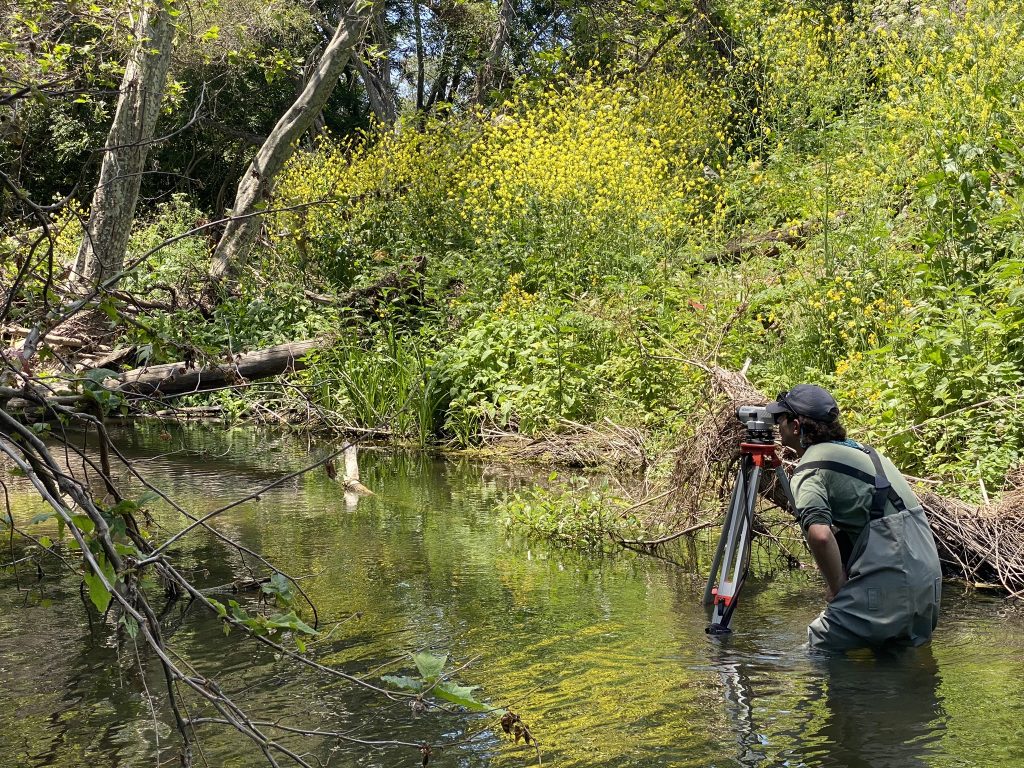
Highlights of the Role
“My favorite part of this position was the diversity of our monitoring efforts,” said Ben. “From deploying wildlife cameras at the headwaters of tributaries to measuring eelgrass density in the bay, I got to spend time in just about every part of the Morro Bay watershed. Over the course of the year, I developed an intimate knowledge of the connections between the land, the creeks, the bay, and the people and wildlife that call these places home.”
Ben looks forward to traveling in the coming year and pursuing a career in fisheries biology in the future. We are very excited to see where Ben’s path leads him, and we wish him the best on his journey!
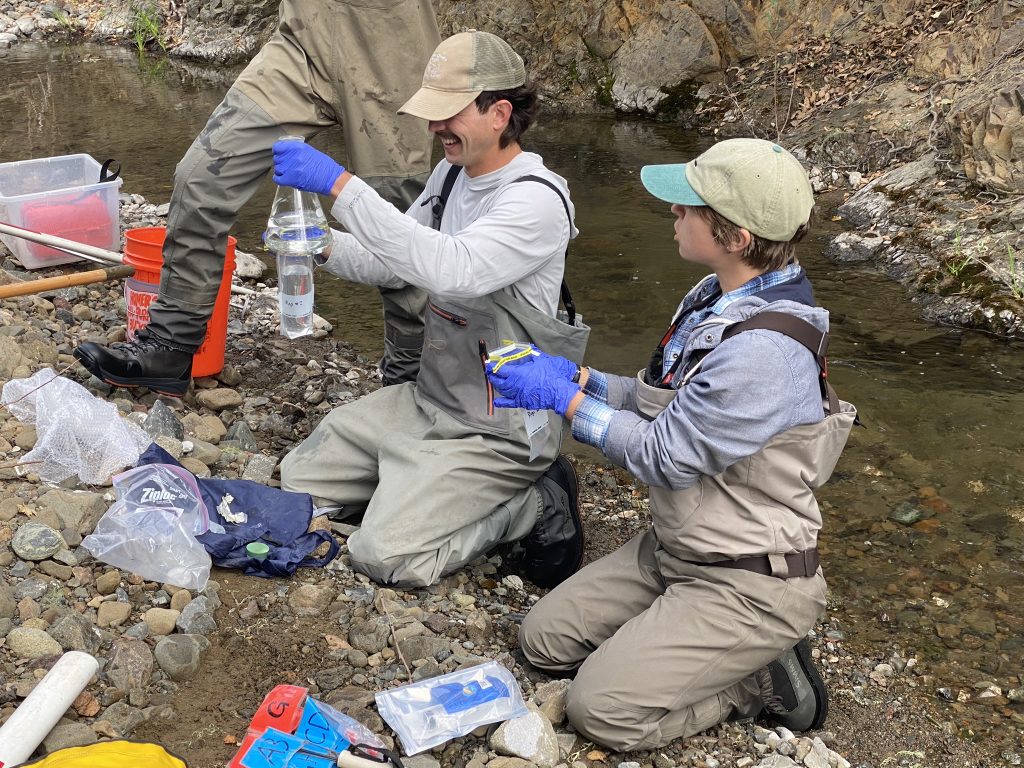
Incoming Technician: Meet Kendra
Kendra grew up in Morro Bay, which helped spark her love for nature. “The privilege of growing up in Morro Bay gave me access to seemingly untouched spaces and a whole outdoor playground to explore in my youth,” said Kendra. “This sense of wonderment grew into a passion for understanding the natural world, becoming a central part of my studies and something I carry with me in everyday life.”
This passion led Kendra to earn an undergraduate degree from UC Santa Barbara in Environmental Studies with an emphasis in marine ecology. She gained hands-on experience with marine invertebrates while working at an abalone farm along the Gaviota Coast. Later, she supported coral reef research in Thailand. “Spending a winter in the Indo-Pacific region participating in field research gave me the opportunity to conduct ecological surveys of key coastal habitats,” said Kendra. “Studying their reaction to climate change, I got to monitor these sensitive habitats while [engaging with] the community.”
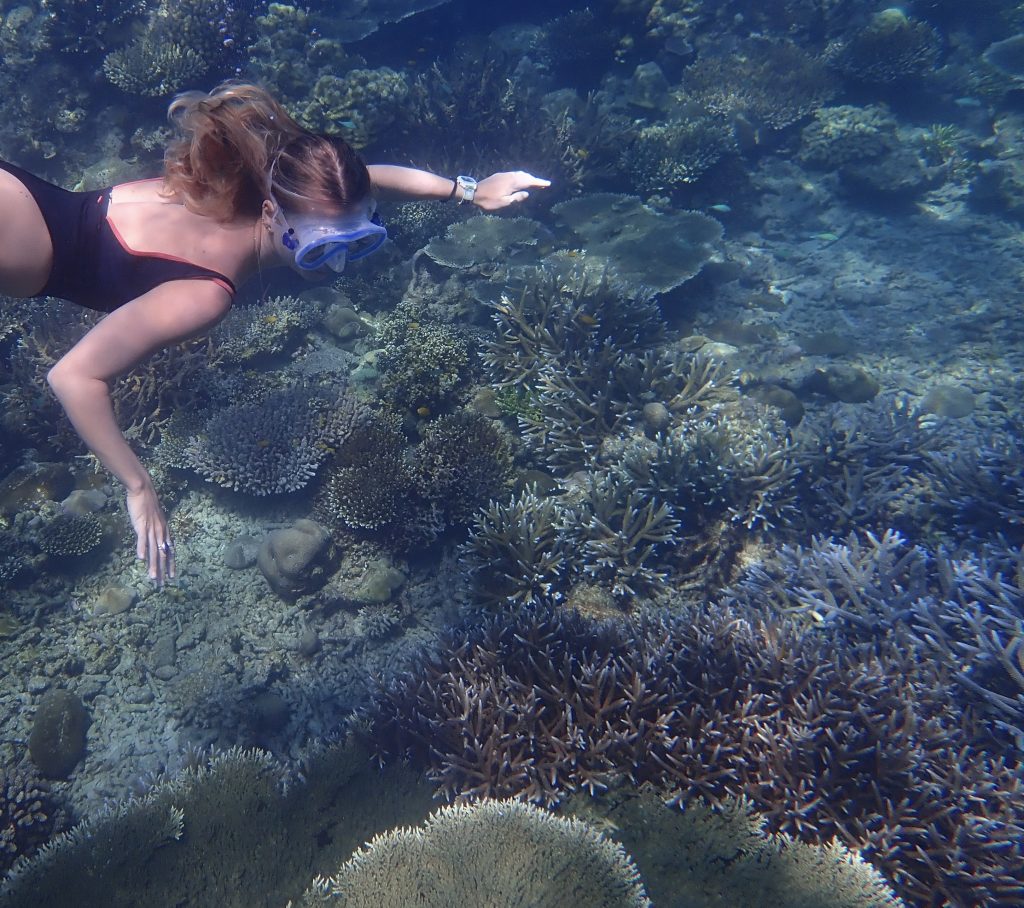
More recently, Kendra has worked with the Central Coast Ambient Monitoring Program (CCAMP), a local partner of the Estuary Program. Kendra’s experiences collecting water quality monitoring data with CCAMP make her a great fit for our Monitoring Program.
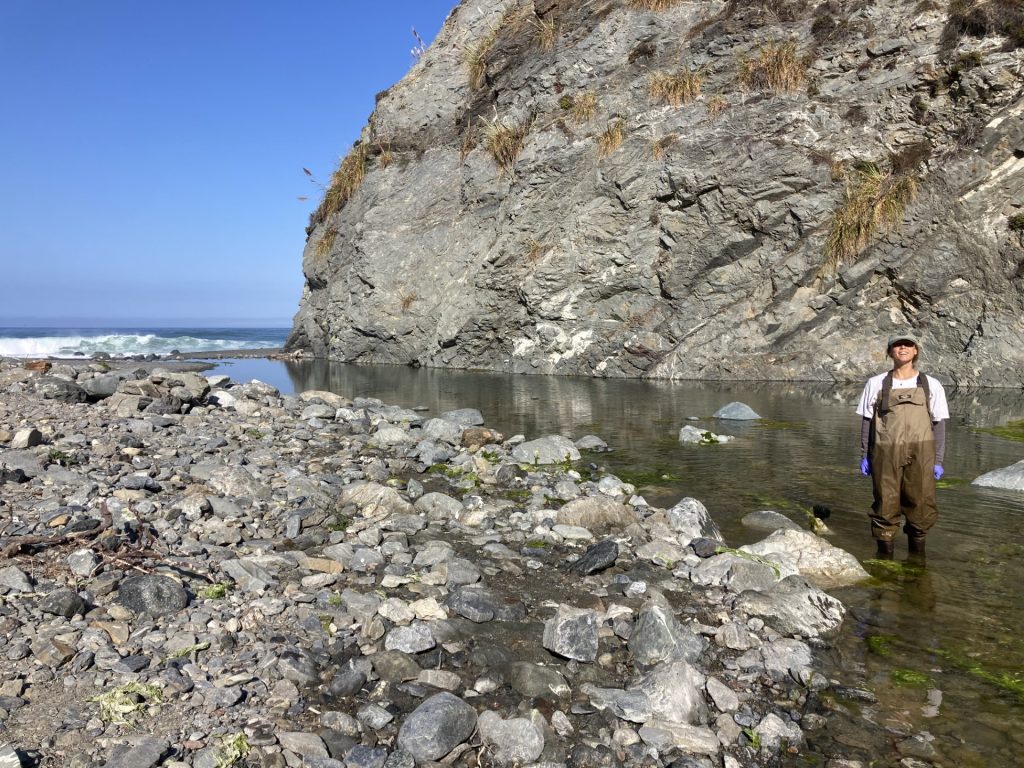
“Getting to be a part of a [group like the Estuary Program] that values community engagement while being stewards of the natural world feels really special,” said Kendra. “I feel like I have the opportunity to give back to the community I was raised in while helping protect it for the next generations.”
Help us protect and restore the Morro Bay estuary!
- Donate to the Estuary Program today and support our work in the field, the lab, and beyond.
The Estuary Program is a 501(c)3 nonprofit. We depend on funding from grants and generous donors to continue our work. - Support us by purchasing estuary-themed gear from ESTERO. This locally owned and operated company donates 20% of proceeds from its Estuary clothing line and 100% of Estuary decal proceeds to the Estuary Program. Thank you, ESTERO!
- Purchase items from the Estuary Program’s store on Zazzle. Zazzle prints and ships your items, and the Estuary Program receives 10% of the proceeds.
- Subscribe to our seasonal newsletter: Between the Tides!
- We want to hear from you! Please take a few minutes to fill out this short survey about what type of events you’d like to see from the Estuary Program. We appreciate your input!